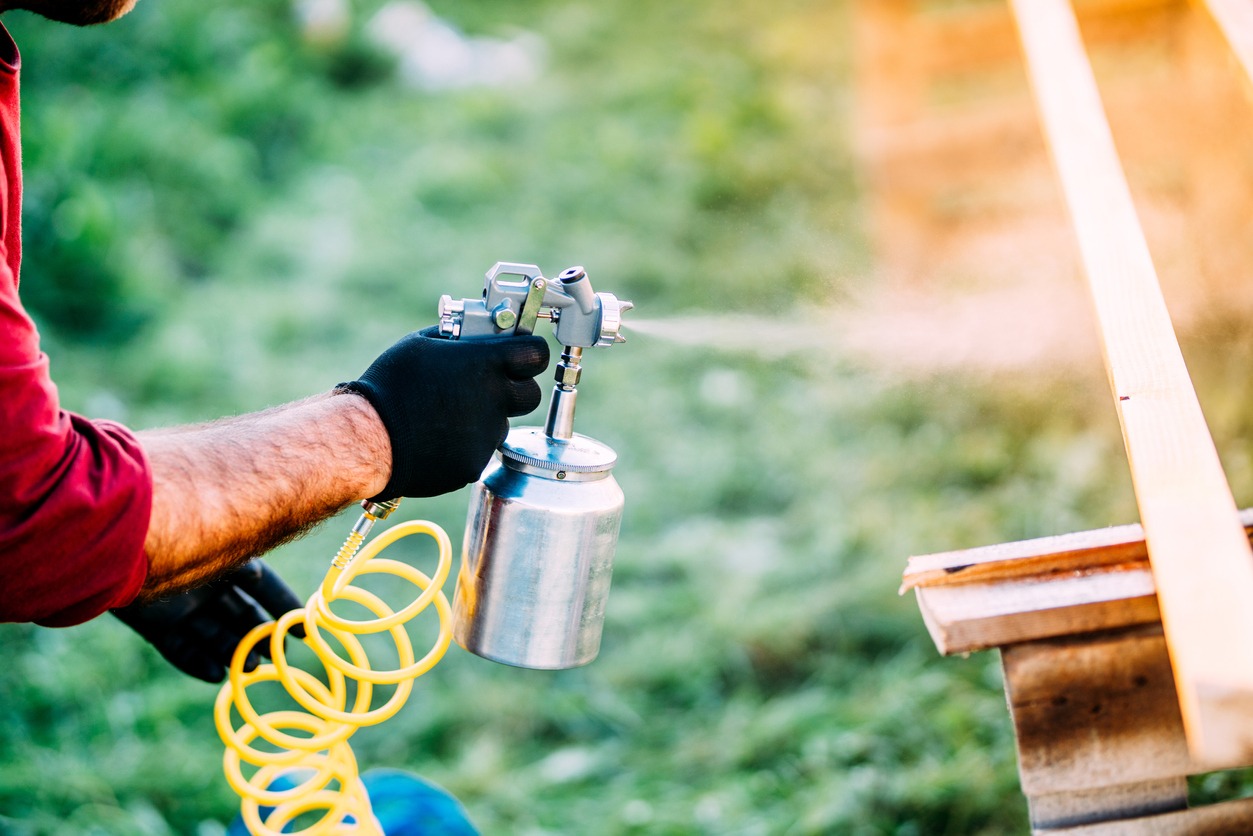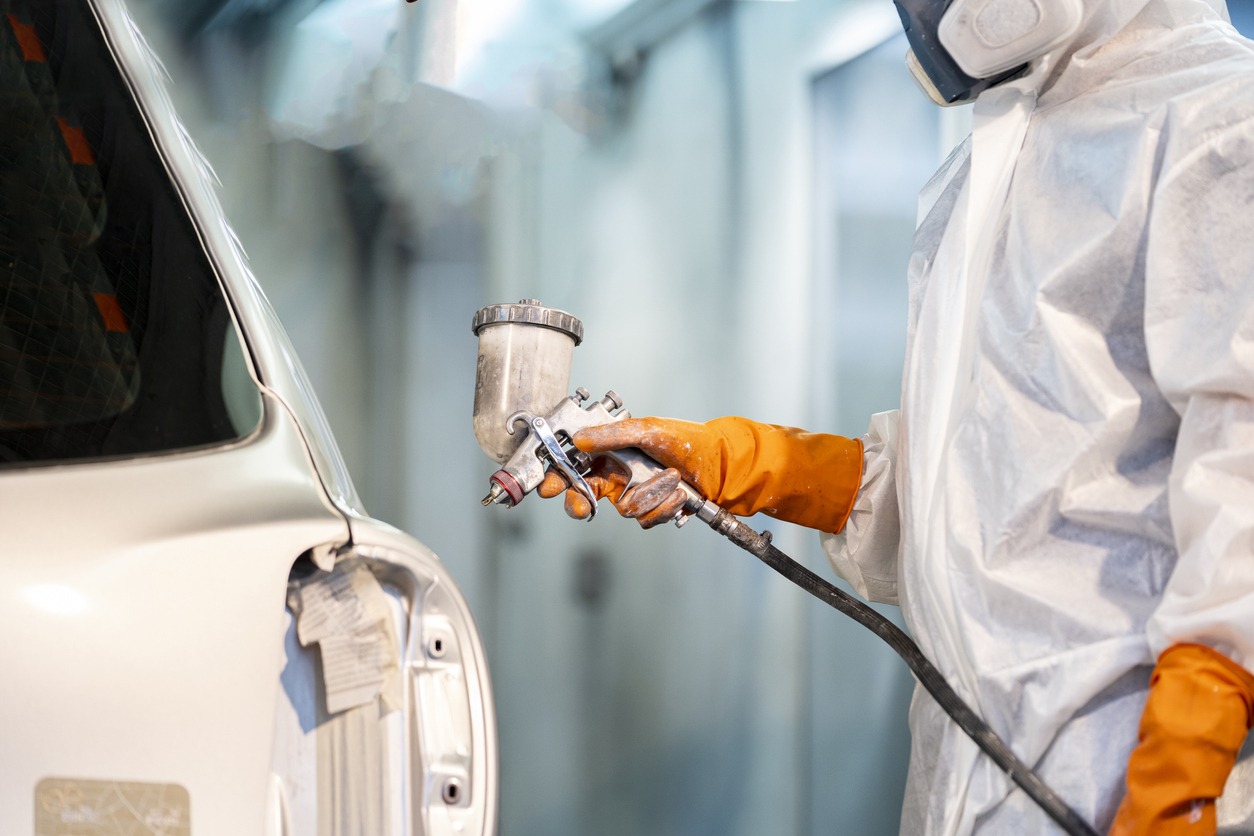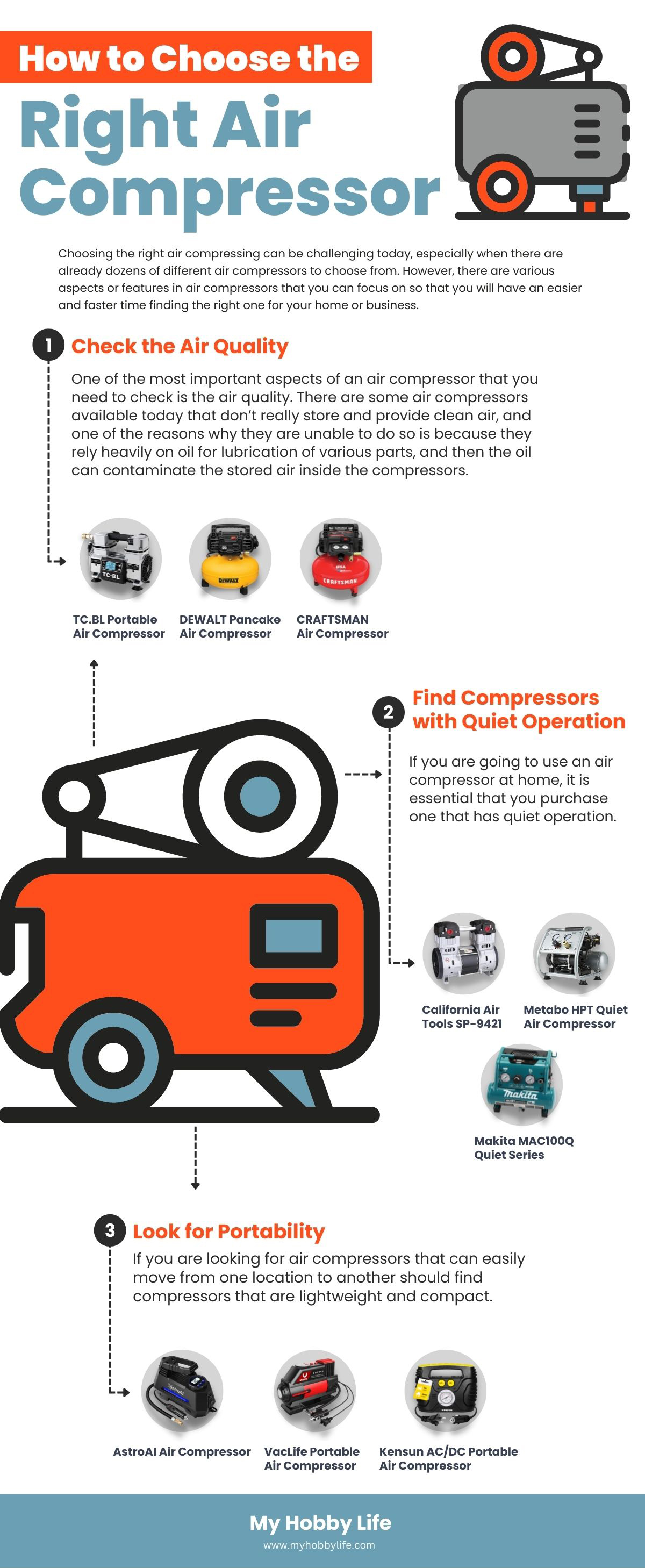Are you tired of manually pumping up your inflatables, or are you struggling with making molds for your pottery projects? If you answered yes, have you considered using an air compressor? These versatile machines can make your crafting and hobby project a breeze. From powering airbrushes to inflating tires, an air compressor can be a game-changer for anyone looking to simplify their work and improve their results.
This article will explore how an air compressor can be used for arts, crafts, and hobbies.
How are Air Compressors Used for Crafts and Hobbies?
Air compressors can be a versatile tools for artists and craftspeople, and they can be used in various arts and crafts in several ways. Here are a few examples:
Airbrushing
One of the most common uses for air compressors in the art world is for airbrushing. An airbrush is a tool that uses compressed air to spray paint onto a surface, and an air compressor provides the necessary pressure to power the airbrush. This technique is often used in painting, illustration, and graphic design.
The air compressor provides a steady and consistent airflow required for airbrushing. The air compressor pumps air into the airbrush, which then mixes with the paint and produces a fine mist of droplets evenly distributed onto the painted surface.
One of the key benefits of using an air compressor for airbrushing is the ability to control the amount of pressure and airflow released. This makes it possible for artists to create intricate and precise details and produce a range of effects, such as gradients and fades. Also, air compressors enable airbrush artists to work quickly and efficiently, as they can cover large surface areas in a short time.
Initially, airbrushing was utilized in car paint shops to carry out rapid and efficient painting jobs. However, it has since evolved into a distinctive art form in its own right. Unlike traditional paintbrushes, airbrushes do not leave unsightly bristle strokes or air bubbles, making them ideal for producing seamless shading transitions that add depth and dimension to any piece of art, including T-shirts, cakes, and pottery.
Airbrush artists use various nozzles and accessories to create virtually any design. Similar to fluid and tattoo artists, airbrush artists depend on air compressors for their start/stop airflow and pressure control mechanisms. Furthermore, air compressors are simple to clean and disassemble, which is particularly important for airbrush artists who travel for work or operate from a kiosk.
When it comes to choosing an air compressor for airbrushing, it’s important to consider factors such as the level of noise it produces, its size and portability, and the type of accessories and attachments it comes with. Some air compressors are specifically designed for airbrushing and come with features like moisture traps and regulators that help ensure a consistent air and paint flow.
Tattooing
Air compressors are also helpful in the tattooing industry. Pneumatic tattoo guns, which tattoo artists use, are powered by air compressors. These tattoo guns are preferred over rotary and coil ones because they are quieter, making it easier for artists to communicate with their clients during the inking session.
An air compressor provides the ideal speed, pressure, and airflow precision needed to create intricate tattoo designs. It comes with several accessories to help tattoo artists achieve different ink effects and results, such as needles and nozzles.
Also, pneumatic tattoo guns are lightweight and comfortable for artists to use for extended inking sessions. They are also compact, making them easy to transport and easier to clean compared to the handwashing techniques necessary for rotary and coil tattoo machines.
Fluid art
Fluid art is a form of abstract art that uses a fluid medium, such as acrylic paint, and various techniques to create unique and unpredictable patterns on a canvas or other surfaces.
Painters and fluid artists use air tools such as hairdryers, straws, and aerosol cans to create abstract shapes and details on the canvas. Many fluid artists turn to air compressors for greater control over airflow and pressure. This is especially helpful when they are crafting less abstract shapes like waves, petals, and other objects.
Initially, the painter applies a base layer of paint, often white, to the canvas. Next, they add drops of color and utilize an air tool to spread the pigment into abstract shapes. They can create intricate designs such as swirls, ocean waves, marbling effects, and flower petals by moving around the canvas. Once the paint has dried, many fluid artists will use paint or markers to outline their art and bring the pattern or object to life.
Air compressors are particularly popular among fluid artists due to their lightweight nature and ability to provide precise control with various air nozzles and start/stop control systems. Air compressors also come with different nozzles, allowing the artist to vary the size and shape of the airflow.
Painting
Painting with an air compressor started in car paint shops. Manufacturers needed an efficient way to even painting of the cars’ bodies, so they turned to air compressors to paint large areas. Since then, an air compressor has been used for quick and even paint coatings on various surfaces, including machinery, exterior and interior walls, apparel, and many other surfaces. The even coat of paint achieved with an air compressor ensures a professional finish and saves time compared to traditional painting methods.
Air compressors are also highly versatile and come with a range of accessories to achieve different effects and finishes. From spraying thick paints to creating fine details, an air compressor can provide the necessary speed, pressure, and airflow precision to achieve the desired result.
Whenever you need to coat a large surface area evenly and quickly with paint, an air compressor is a preferred tool for artists and handymen.
Cleaning
Artists use air compressors to clean their workspace, art supplies, and equipment. The high-pressure air blast generated by the air compressor can easily blow away dirt, debris, and dust particles from difficult-to-reach areas, such as the crevices of art supplies, electronic equipment, or even computer keyboards.
Many artists prefer to use compressed air to clean their supplies, as it doesn’t leave any residue, unlike water or other cleaning agents that may damage delicate materials such as paper or canvases. This is especially important for artists who work with pastels or charcoal, which can easily smudge or pick up debris. Using an air compressor also eliminates the need for manual cleaning, which can be tedious and time-consuming.
Drying
Artists also use air compressors for drying their artwork. After applying paint or other liquids to a surface, such as a canvas or paper, artists may need to dry the surface quickly to avoid smudging or blending of colors. This is where an air compressor can be helpful.
By using a low-pressure setting on the air compressor, artists can blow air onto the surface of their artwork, effectively drying it without disturbing the paint or ink. This technique can be particularly useful for watercolor or ink paintings, which can take longer to dry than other types of media.
Sculpting
Air compressors can be used to power pneumatic tools, such as chisels and hammers, which can be used to carve and sculpt materials such as stone, wood, and metal. This allows sculptors to quickly remove material from their workpieces more precisely than they might achieve with traditional hand tools.
Air compressors are especially helpful for those working with clay, plaster, or wax. Sculptors use them to blow away dust or debris from their work. This is especially important when working with materials like clay, which can produce a lot of fine dust as it is manipulated.
Additionally, air compressors can be used to power airbrushes, which can be used to add fine details or color to a sculpture.
When selecting an air compressor for sculpting, artists should consider the size and weight of the tool, as well as its noise level and the type of airflow it produces. They should also look for a compressor with a tank, which can help regulate the pressure and flow of air and prevent the compressor from overheating during extended use.
Mold-making
Mold-making is the process of creating a mold of an original object, which can then be used to create multiple copies of that object. This technique is often used in sculpture, prop-making, and other forms of visual arts.
First, it can be used to power tools such as air-powered chisels, grinders, and sanders that are used for quickly and efficiently shaping the mold material. Air compressors can be used to create molds for casting by powering a vacuum or pressure system that is used to create a vacuum to draw liquid mold material into a mold cavity. This technique can be used in a variety of crafts, such as pottery, glassmaking, and jewelry making.
In addition to power tools, air compressors can also be used to blow air into mold cavities to ensure that the mold material is distributed evenly and there are no air pockets or bubbles. This is especially important in silicone or rubber molds, where air bubbles can create imperfections in the final cast.
Conclusion
Air compressors can be valuable tools for artists, crafters, and hobbyists alike. From painting and sculpting to cleaning and drying, the possibilities for its application are endless. This versatile and precise tool can help take your creative endeavors to the next level. Whether you’re a seasoned professional or just starting out, learning how to use an air compressor can help you achieve stunning results and make your crafting and hobby time even more enjoyable. Surely, you can find a good one made in the USA or China, so why not add an air compressor to your toolkit and see where your creativity takes you?
If you need a guide on how to choose the right air compressor, let these tips help:





